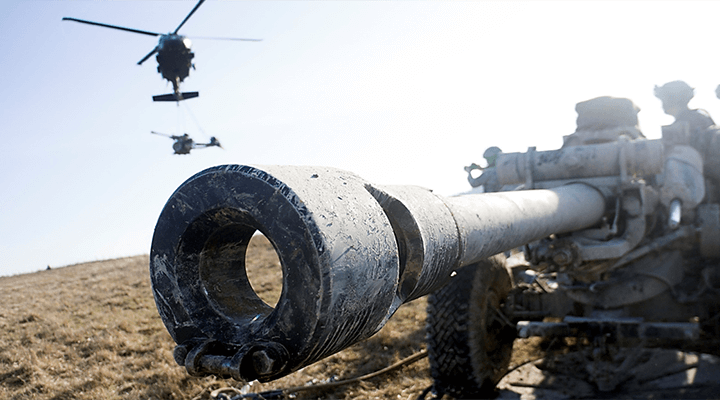In April of 2016, the current national security adviser, Lt. Gen. H.R. McMaster, was chief of the U.S. Army Training and Doctrine Command’s Army Capabilities Integration Center, the office that examines gaps between what the Army can do and what it ought to be able to do. In a hearing that month, McMaster warned the Senate that the Army is “outranged and outgunned by many potential adversaries.”
These “near-peer” adversaries are Russia and China, who along with Iran, North Korea, and the group of non-state actors who engage in international terrorism, the Department of Defense believes constitute the greatest threats to national security.
Russia, Army Chief of Staff Gen. Mark Milley recently told an audience at the National Press Club, is “clearly the most capable” of these. “Russian military capability is significant,” Milley said, “and in fact is the only country on earth that represents an existential threat to the United States” because they are the only nation with the nuclear capability to destroy the U.S.
Though the Russian leadership, Milley believes, is a “purely rational actor” who can be deterred through traditional means, after nearly 16 years of adapting our force to fight against the threat of non-state actors, our ability to provide that deterrence is waning.
THE ARMY HAS NEGLECTED MODERNIZATION EFFORTS
Such is the background behind a little-noticed study from Andrew Hunter and Rhys McCormick at the Center for Strategic and International Studies, a national security think tank. In “The Army Modernization Imperative,” published at the end of May, Hunter, a former staffer on the House Armed Services Committee and most recently chief of staff to Under Secretary of Defense for Acquisition, Technology, and Logistics Frank Kendall, and his research associate McCormick argue “a mismatch exists between U.S. Army threats, budgets, and its modernization strategy.”
The authors demonstrate that the most recent drawdown in defense capabilities, from 2008 to 2015, was not only a larger hit to modernization efforts than the previous two drawdowns (1969-1975 and 1985-1998), it was only one part of “triple whammy” to hit Army modernization efforts. This threefold hit also includes the ideas that the two previous drawdowns came after significant modernization efforts, and the observation that, under current budget plans, the Army’s research, development, testing, and evaluation expenditures are “likely to remain below historic averages for the foreseeable future.”
They point out that not only are overall RDT&E expenditures below those historical averages,but with the failure of the Future Combat System program and its successor, the Ground Combat Vehicle program, Army spending on System Development and Demonstration, that portion of the research and development budget dedicated to activities such as live-fire demonstrations, has declined by 95 percent.
One example of an area where this is evident (an area where a good friend who studies these things for a living says scares him more than any other) is artillery. The army has cancelled two successive artillery modernization efforts, the XM2001 Crusader, killed in 2002, and the XM1203 Non-Line-of-Sight cannon, which died with the rest of FCS in 2009. This leaves the Army with the M109 Paladin as its primary artillery piece; the Paladin, while a capable howitzer, has been in the Army’s inventory in various configurations since 1963.
Consequently, say Hunter and McCormick, “Russian indirect fire capabilities today are superior to those of the United States. Comparing conventional artillery systems, the Russians not only outrange the United States, but can also fire at a greater rate.” My friend also directed me to an August 2016 Washington Post article by retired Maj. Gen. Robert Scales, who also points out that not only do the Russians have better artillery pieces, they have continued to improve their artillery ammunition, while the U.S. has moved in the opposite direction.
A consequence of signing the treaty banning cluster munitions was our destruction of our stockpile of rounds like the dual-purpose improved conventional munition, an artillery round that comprised many smaller bomblets with shaped charges that would detonate on the tops of tans where armor is thinnest. It is one of the few ways for artillery to engage armored formations effectively.
In tomorrow’s Daily Intel, we’ll discuss some of the authors’ recommendations for ways the Army can address these modernization challenges.




